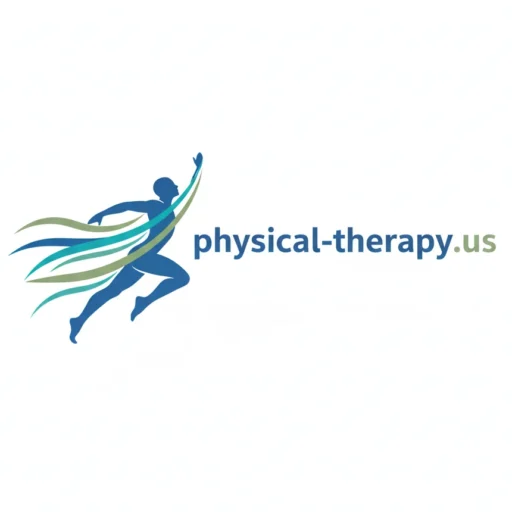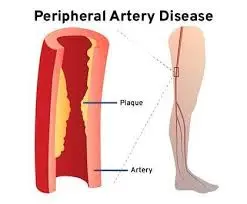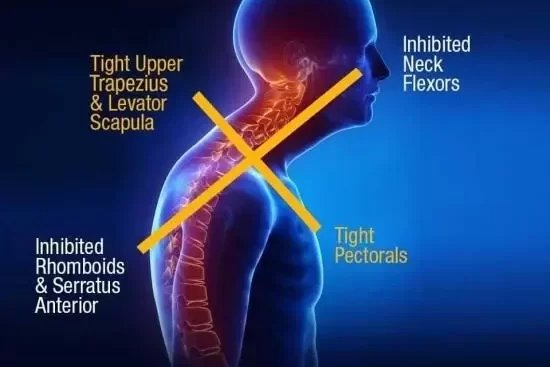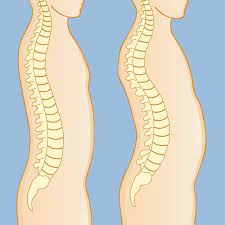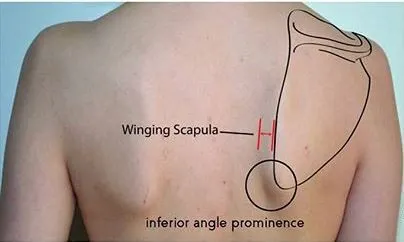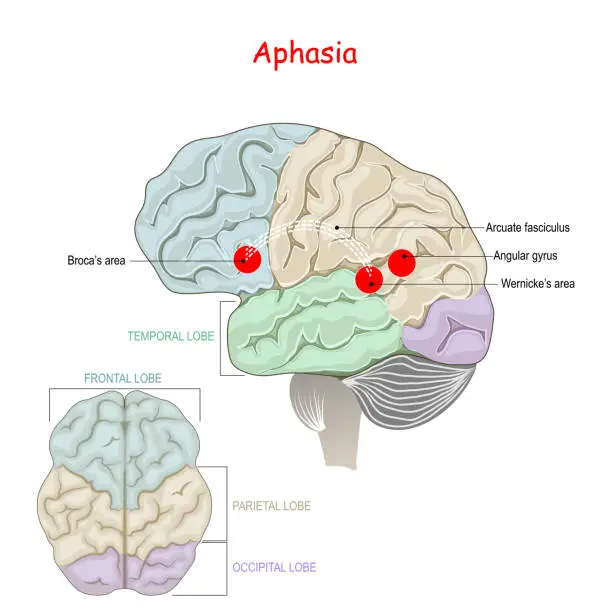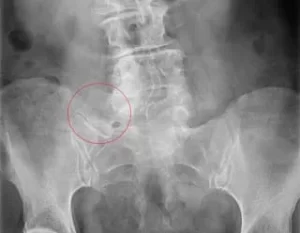Can Knee Pain Cause Calf Pain?
Introduction
A deeper physiological relationship may be indicated by the frequent co-occurrence of knee pain and calf pain. This connection is the result of intricate interactions between the neuronal, vascular, and muscle networks that intersect these two regions. This article examines the causes, symptoms, and available treatments to disentangle this association.
Yes, calf pain frequently results from knee pain. Because the knee and calf are anatomically connected by blood arteries, muscles, tendons, and nerves, pain may spread from one region to the other. Additional pressure on the calf muscles may arise from changes in posture or gait caused by knee pain.
Walking, running, and jumping require the coordination of your lower leg’s structures, which comprise your thigh, knee, and calf. But because the structures of the lower legs are closely related, pain in one might lead to pain in another. People who have pain in both their knees and legs are an example. In addition to developing treatment regimens to cure your hurting leg, a physical therapist may properly assist you in determining the cause of your knee and calf pain.
Since knee and calf pain share similar anatomical features and neural pathways, they are frequently linked. Because of the connections between muscles, tendons, nerves, and blood vessels, pain in one place can occasionally radiate or be referred to the other. For instance, knee arthritis may result in pain that travels down the leg, including into the calf, or it may create changes in stride that increase strain on the muscles of the calf.
In addition to traveling down the leg, the nerves that innervate the knee can also induce pain in the calf if they get inflamed or constricted. Walking habits may vary due to knee pain, which can overstress the calf muscles and lead to strain. Knee arthritis-related inflammation can extend to the calf, or a change in gait may put more strain on the calf muscles.
The connection between calf and knee pain
The connections between the leg’s muscles, tendons, nerves, and blood vessels, knee, and calf pain are common. When knee problems occur, the pain that results may spread to the calf region.
Knee tendonitis, osteoarthritis, and ligament injury can all cause symptoms in the calf. Knee pain can sometimes be made worse by calf muscle cramps, especially after strenuous exercise. Because of this interdependence, addressing one region can frequently make the other less uncomfortable.
Common causes of knee and calf pain
There are many different reasons why people get knee and calf pain, from small accidents and misuse to more serious conditions. Common causes include tendinitis, arthritis, strained muscles, and traumas such as meniscus tears or knee ligament tears. Muscle cramps, strains, and tendinitis are common problems in the calf, and diseases like deep vein thrombosis or peripheral artery disease should also be taken into account.
There are numerous reasons why you could experience pain in your knees and calves. A few problems that may result in pain in both of these locations are as follows:
When a leg muscle is overstretched or damaged, it might result in a strain. Repetitive motions, particularly those that place a lot of strain on the knees, can aggravate this tendon. The back and side of the knee, as well as the top of the calf, are usually where this problem causes pain. Walking or running down may make your pain worse.
Knee pain causes:
Sciatica
There are several causes of sciatica, such as spinal stenosis, herniated discs, or nerve damage. Sciatica can end in pain for the entire leg, including the calf and knee. Pain extending along the sciatic nerve, which extends from the lower back through the buttocks and down the leg, ending below the knee, is commonly referred to as sciatica or lumbosacral radiculopathy.
It is frequently caused by a twisting or pivoting injury, especially while the knee is bearing weight. Pain, edema, stiffness, and a sensation of the knee locking or catching are some of the symptoms. From your thigh to your shinbones, the meniscus acts as a “shock absorber.” A person with a meniscus tear may feel pain and stiffness, and locking or catching of the knee, close by a “pop.”
Arthritis and gout
Inflammatory arthritis, gout, and a few other forms of arthritis can all cause pain behind the knee. According to the Arthritis Foundation, the most prevalent kind of arthritis is osteoarthritis, which damages the cartilage or cushioning between joints. Moreover, autoimmune conditions, including rheumatoid arthritis and lupus, are additional reasons.
Calf pain causes:
Baker’s cyst
Baker’s cysts are collections of fluid that run from the front of the knee to the back and are associated with either meniscus rupture or arthritis. In addition to generating severe pain, a Baker’s cyst is often a sign of an actual knee problem. When the underlying cause of the swelling is managed, such as by treating arthritis, this will usually go away, she says.
Calf or hamstring strain or cramp
Overuse and sudden exercise are two of the primary causes of behind-the-knee pain. This is caused by a cramp or tension in the hamstrings or calves. Both can be treated with ice, rest, mild stretching, and anti-inflammatory drugs; however, in order to rule out blood clots, one should seek medical attention if there is swelling or ongoing pain. If you are unable to bear weight on your knee or are in danger of falling, you should visit the emergency room.
Muscle and Tendon Injuries
- Both calf and knee pain can result from changes in biomechanics caused by strained or torn muscles in regions such as the gastrocnemius or hamstrings.
- Because of inflammation, conditions like popliteus tendonitis can cause knee pain that spreads to the calf. The pain is further worsened by trigger points or stiffness in other muscles that strain the knee joint.
In conclusion, it is critical to acknowledge the possibility of these overlapping medical conditions. To identify and address any significant underlying issues, suffering from knee and calf pain at the same time, necessitates a thorough evaluation.
Common Symptoms for knee and calf pain
Pain, edema, stiffness, redness, and warmth are typical signs of knee and calf pain. An inability to fully straighten the knee, popping or crunching sounds, and knee weakness or instability are possible additional symptoms. Tight muscles, a lump or protrusion, soreness, bruises, and trouble walking can also be symptoms of calf pain.
Knee pain:
- Depending on the source, pain can be subtle or severe, and its location and intensity might change.
- The area around the knee joint may be swollen.
- Redness and warmth may indicate inflammation.
- Weakness or instability: The sensation that the knee is giving way or buckling.
- Sounds that pop or crush: These could be connected to specific motions.
- Pain: The back of the lower leg may be dull, painful, or acute.
- Muscle Tightness: The sensation that the calf muscle is stiff or taut.
- When the calf muscle is touched, it hurts.
- Bruising: Could cause the calf to become discolored.
- Walking or standing on your toes with difficulty may be a sign of calf strain or muscular weakness.
- Swelling: The calf muscle may experience swelling.
- Warmth or redness: Could be signs of inflammation.
- Skin Discoloration: Alterations in the color of the skin on the toes, legs, or feet may indicate a more serious problem.
Pay particular attention to any serious symptoms when evaluating your condition:
- Pain following extended sitting may be a sign of thrombosis.
- A popping sound may be a sign of ligament damage in a knee injury.
- Chronic pain that gets worse after a few days of at-home therapy.
- Obvious symptoms of harm include a deep cut, exposed tendon, or bone.
- Unable to Support Weight: On the injured knee.
- Warmth, redness, or fever around the knee could be signs of an infection.
- In the calf below the knee, there may be swelling, numbness, tingling, or blueish discoloration.
- Within a few days, if home treatment doesn’t alleviate your pain, swelling, or other symptoms.
- Unexpected calf pain: that started when you were not moving, or that doesn’t go away when you’re at rest.
- Additional symptoms include leg swelling, redness, skin abnormalities, or trouble breathing.
- Seeking a professional evaluation is essential if you encounter any of these symptoms to rule out serious diseases such as musculoskeletal injuries or deep vein thrombosis.
Examination and evaluation
Although there are many reasons for knee and calf pain, some signs call for prompt medical intervention. You need to see a physician if you observe any of the following:
- Possible inflammation is indicated by warmth near the painful joint.
- Fever appears along with pain, which may be a sign of an underlying infection.
- A leg that appears pale or feels colder than normal could be a sign of circulation problems.
- Unable to walk or support one’s weight.
Treatment
Conditions affecting the knees, calves, and other body parts can be treated by physical therapists.
- Injections of corticosteroids: These can significantly reduce chronic pain and lower inflammation.
- Nerve blocks are helpful in stopping pain signals from the afflicted locations, particularly when the pain is coming from irritation of the nerves.
- Surgical Interventions: Depending on the extent, arthroscopy or knee replacement surgery to fix damaged structures can be recommended.
Physical Therapy:
Physical therapy is essential for treating knee and calf pain since it focuses on individualized rehabilitation programs made to meet the needs of each patient. To develop focused treatment plans, licensed physical therapists start with a thorough evaluation of strength, range of motion, and balance. Advanced options could be required when conservative treatments fail to provide improvements:
For knee pain:
Quadriceps Strengthening:
 Quadriceps Exercises
Quadriceps Exercises
- Quad Sets: Keep one foot on the floor while bending one knee while lying on your back. After a few seconds of holding your quadriceps tight, release them. Do the same with the other leg.
- Straight Leg Raises: While maintaining an extended knee, raise one leg straight up while lying on your back. After a few seconds of holding, drop the leg.
- Leg Extensions While Seated: Sit with your legs outstretched. One leg should be raised slowly and then lowered back down.
Hamstring Strengthening:
 Hamstring Strengthening
Hamstring Strengthening
- Standing Hamstring Stretch: To feel a stretch in your hamstrings, stand with one leg outstretched and bend forward.
- To perform hamstring curls, place one foot on the floor and one leg bent while lying on your back. The other leg should be raised, bent, and then straightened again.
Knee Flexibility:
 Active knee flexion and extension
Active knee flexion and extension
- Knee Flexion: Bring your heel to your glutes while standing with one leg bowed, then hold.
- Knee Extensions: While sitting with your legs spread wide, slowly pull your knee up to your chest and then extend it again.
Low-Impact Activities:
- Walking: Increase the length and distance of your walks gradually, starting with shorter ones.
- Cycling: Without placing a lot of strain on the joint, stationary or recumbent cycling can help strengthen your knees.
For Calf Pain
Calf Raises:
 Calf Raise Exercise
Calf Raise Exercise
- Calf Raises: While standing or sitting, place your feet flat on the ground. Elevate yourself to your toes, hold for a brief moment, and then descend again.
Stretches for the Calf:
 Calf stretch
Calf stretch
- Stand with one leg slightly ahead of the other, then bend forward while maintaining a straight back leg and a planted heel to stretch your calf muscles. Bend your front knee slightly and feel the calf muscle in your back leg stretch.
- Sitting with one leg bent and your foot flat on the floor will help you stretch your calf muscles. To perform the calf stretch, raise your toes closer to your body. Improves range of motion and eases the tension in tense muscles.
Before and after surgery, physical rehabilitation might also be beneficial. In addition to improving recovery outcomes, pre-surgical therapy helps the body get ready for surgery and helps restore joint function afterward.
Advantages of manual therapy
- Uses focused approaches to lessen pain.
- Increases mobility, making it possible to resume daily activities more quickly.
- Prevents further injuries by strengthening the knee’s supporting muscles.
Conclusion
In conclusion, if you have severe knee or calf pain, with swelling, numbness, or a burning feeling, you should visit a doctor.
This aids in ruling out dangerous illnesses, including cardiovascular problems or deep vein thrombosis (DVT). Effective treatment and prevention of knee and calf pain depend on an understanding of its causes and relationships.
Pain can be reduced, and more serious problems can be avoided with prompt examination and treatment. People can increase their mobility and quality of life with the help of physical therapy and proper medical advice, which emphasizes how crucial it is to deal with these interrelated problems early on.
FAQs
How can calf and knee pain be eliminated?
Start by using the RICE method (Rest, Ice, Compression, Elevation) to reduce knee and calf pain. Elevate the leg to lessen swelling and rest the affected area by avoiding activities that make the pain worse. Using a bandage to compress the area will help reduce swelling even further.
How can one determine whether knee pain is severe?
Knee pain can indicate some problems, some of which need to be treated right away. If you are unable to bear weight because of a deformity, edema, or severe knee pain, get medical help immediately. Persistent pain that doesn’t go away with rest or medicine, or pain that gets in the way of everyday activities, is a further sign of severe knee pain.
What is the source of calf pain?
A lack of nutrition could be the cause of calf pain. While a vitamin B12 deficiency can occasionally result in muscle cramps throughout the body, including the calves, a vitamin B1 deficiency can cause cramping in the muscles. Painful cramping in the lower legs can also be a symptom of iron deficiency, particularly if it results in anemia. Apart from vitamin deficiencies, muscle cramps and spasms that may afflict calves can also be linked to deficits in minerals such as magnesium, potassium, calcium, and salt.
Who should I see if I have pain in my calf muscles?
If you feel soreness in your calf muscles, you should first consult an orthopedic doctor or sports medicine specialist. To rule out other possible reasons, such as nerve damage or circulation problems, you might also need to consult a neurologist or vascular surgeon if the pain is severe, ongoing, or accompanied by other symptoms.
Does pain in the calves indicate diabetes?
Diabetic neuropathy, a condition in which diabetes damages your nerves, can manifest as leg pain. Your legs may be among the several nerves in your body that are impacted. Neuropathy is one of diabetes’s long-term consequences.
Which medication is most effective for knee pain?
Pain from arthritis can be reduced using NSAIDs (non-steroidal anti-inflammatory drugs). These drugs ease pain and lessen inflammation. Celecoxib and etoricoxib are two further anti-inflammatory medications that have a comparable effect.
What is the reason for knee pain?
Joint problems and pain in the knee are closely linked to a vitamin D deficiency. It may contribute to the development or worsening of knee pain by causing weakening of the bones, soreness in the muscles, and even inflammation of the joints. Joint problems and bone health can also be impacted by other deficiencies, such as calcium.
Reference
- Grogan, J. (2025, February 18). Knee and calf pain | Panther Physical Therapy. Alliance Physical Therapy Partners. https://pantherpt.com/three-issues-that-can-cause-knee-and-calf-pain/
- Foi. (2024, September 5). Pain behind the knee and calf – here’s what it could mean. Florida Orthopaedic Institute. https://www.floridaortho.com/news/pain-behind-the-knee-and-calf/
- Knee Pain Centers of America. (n.d.). Can knee pain cause calf pain? https://www.kneepaincentersofamerica.com/blog/can-knee-pain-cause-calf-pain?488a7b8b_page=2
